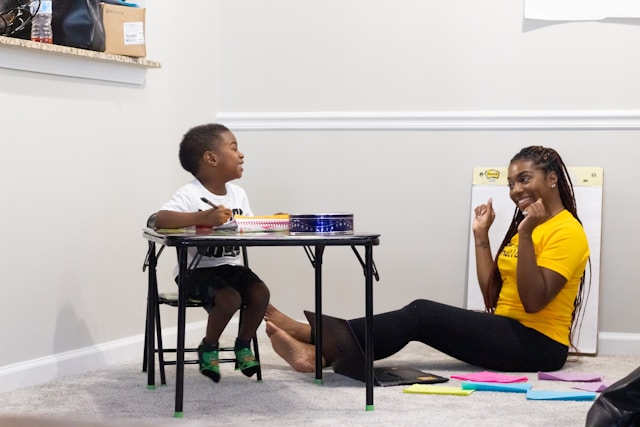Raising a bilingual child is sometimes a necessity given the differing cultural backgrounds of its parents or when there is a need to integrate the child into foreign surroundings. In other cases, however, a child may be raised to speak and understand more than one language in hopes that their enhanced communication skills will broaden their horizons and give them a head start in life.

No matter the reasons, teaching a child to be bilingual has numerous benefits ranging from improved cognitive and social-emotional development to the ability to forge deeper connections with their family and cultural traditions. In this article, we will outline some practical ways you can foster greater fluency in more than one language in your child.
Minority Language at Home (MLAH)
The MLAH approach is a popular method used to raise bilingual children. It is commonly used by bilingual families who are living in a community that speaks a language different to their own such as expat families or migrants.
By speaking the minority language at home with their family and the majority language outside in the wider community a child has exposure to both languages and is able to maintain an understanding of their parents’ mother tongue as well as develop their fluency in another language.
The drawback of this method is that the child may not get enough exposure to the majority language. This could make it challenging for them to integrate into society, make friends, and progress at school. In this case, parents may need to supplement their child’s exposure to the majority language through additional activities or learning.
One Person One Language (OPOL)
This is another common method used by parents who are raising a bilingual child. Rather than both parents speaking the same language, one parent will speak in one language with the child and the other parent will speak in another. For instance, using the OPOL method a British mother and a German father will speak in their respective languages with their child.
This can help the child develop fluency in two languages at the same time and is particularly helpful when the majority language is the same as that spoken by one of the parents.
Time and Place
This approach is often used by parents who are not fluent in the other language they wish to teach their child. It involves designating specific times or chasing certain situations when the second language is spoken such as mornings or mealtimes or when playing games or reading stories.
This can be a fun way for a child to learn another language but requires consistency and dedication on the part of the parents. Non-bilingual parents who wish to teach their child a second language can also benefit from placing their child in learning environments where they gain exposure to a new language such as at World Kids School where children are immersed in Spanish and Mandarin Chinese.
The method parents use to help their child develop bilingual skills will depend on a range of factors including their own proficiency in another language, as well as their cultural background and overall language goals for their family.
















Add Your Comment